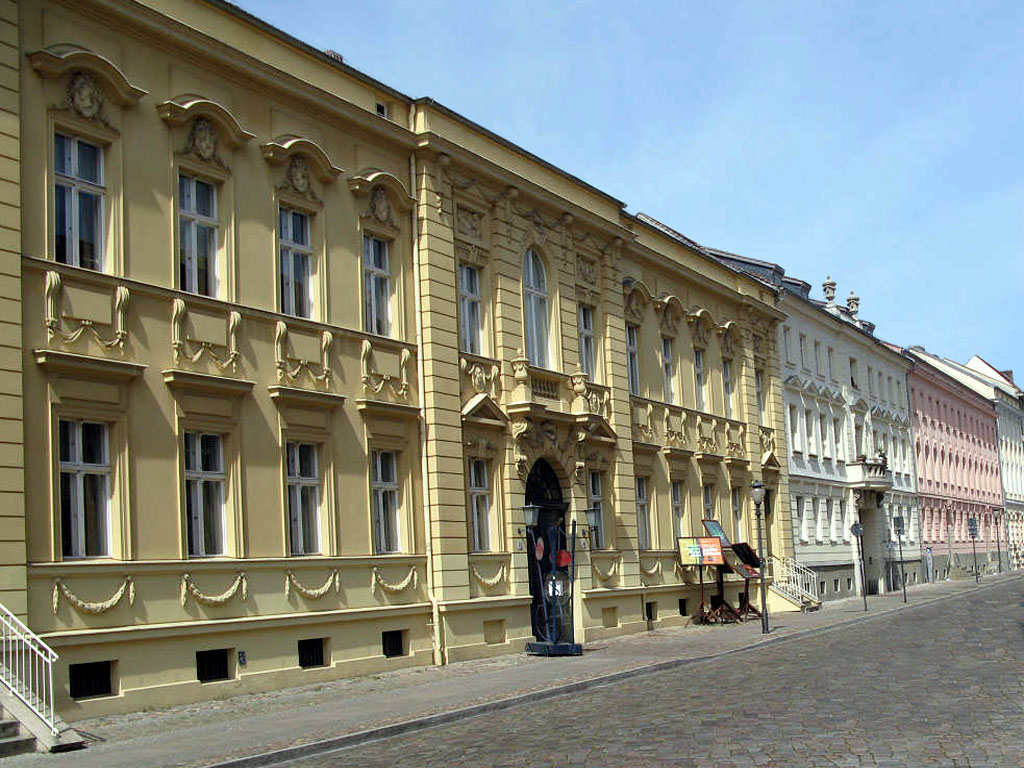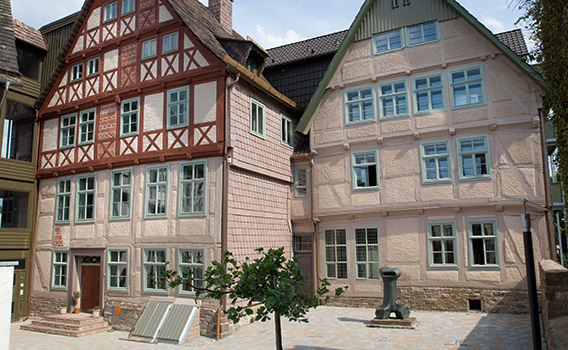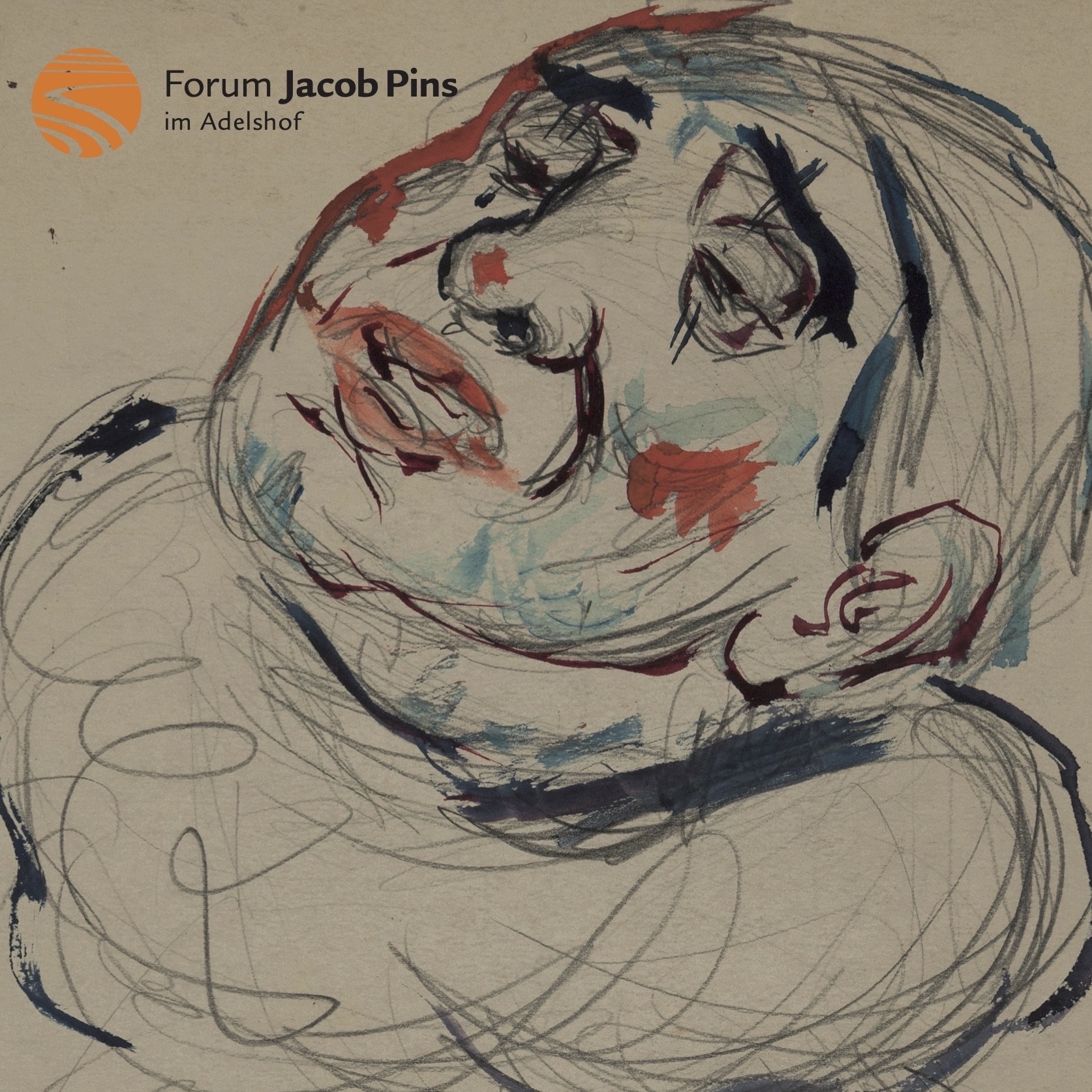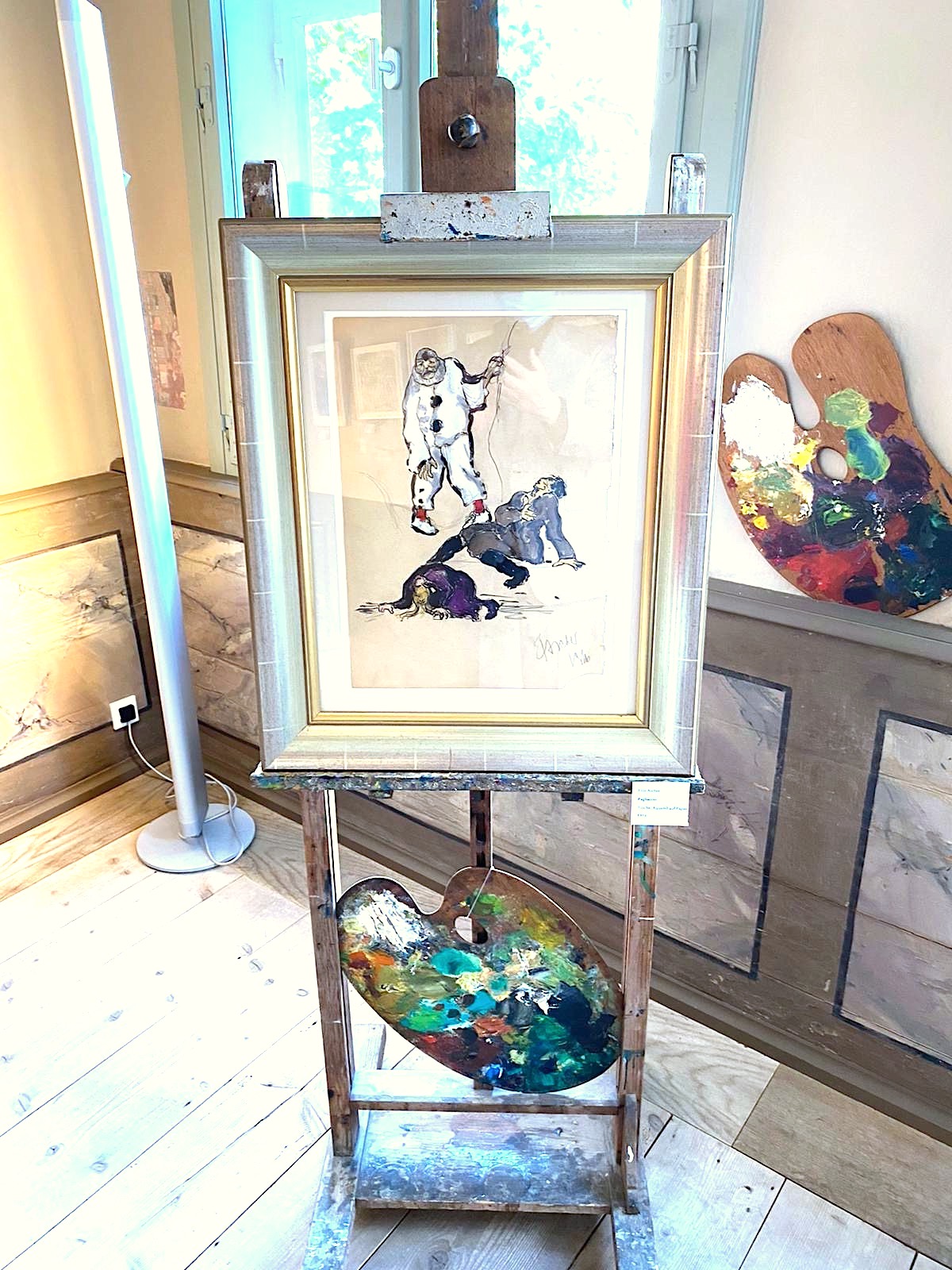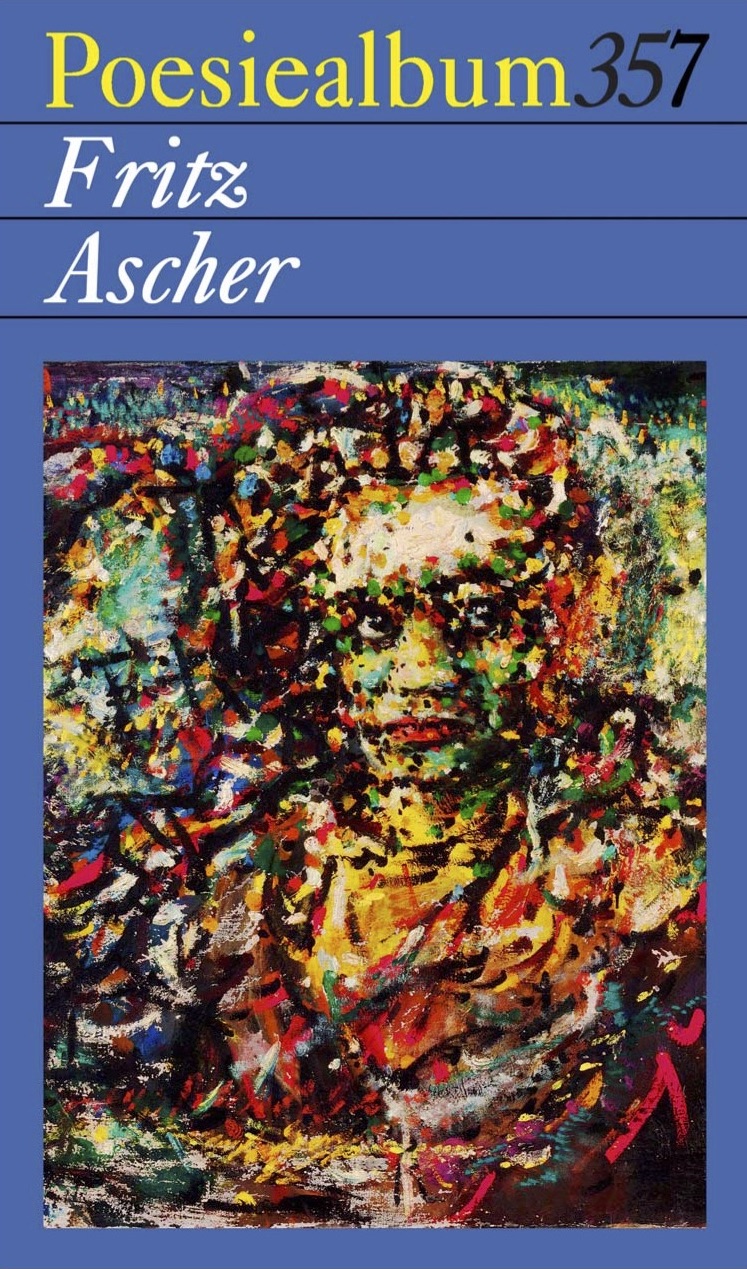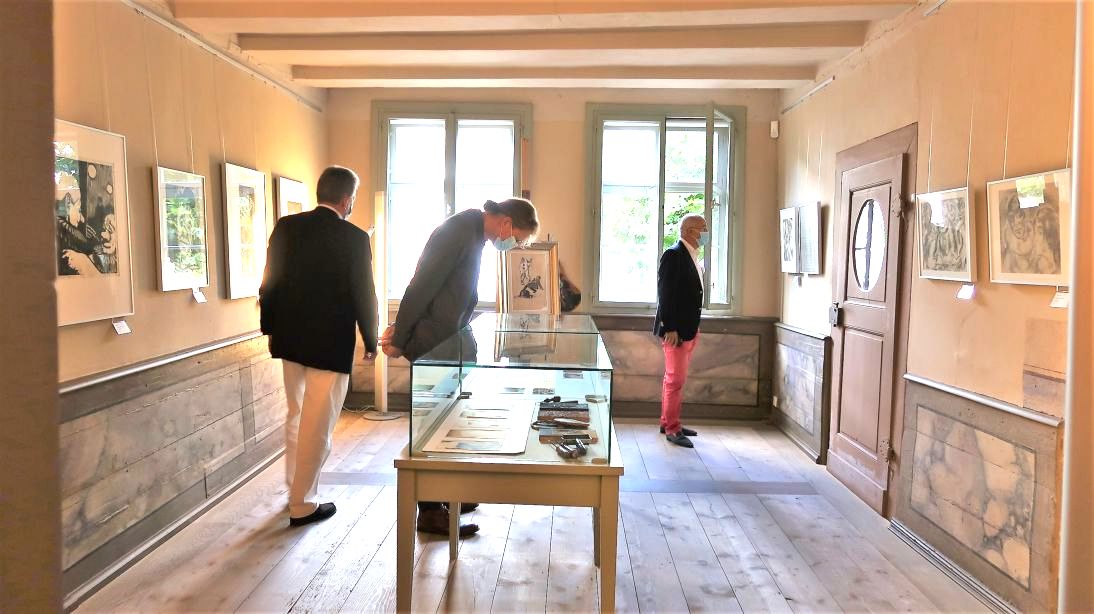Jutta Goetzmann
Bus Tour with Three Stops: Between Utopia and Exile.
Architecture, Painting and Film in Potsdam around 1930
Nikolaisaal, Potsdam (Germany)
Nikolaisaal Potsdam
Wilhelm-Staab-Straße 10-11, Potsdam, NY, Germany
ZWISCHEN UTOPIE UND EXIL ARCHITEKTUR, MALEREI UND FILM IM POTSDAM UM 1930 Eine musikalische Zeitreise mit dem Bus in drei Etappen Auf dieser Bustour wird das Potsdam am Ende der Weimarer Republik wieder lebendig. Lassen Sie sich überraschen von der Vielfalt der modernen Architektur und den faszinierenden Kunstwerken jener Zeit, oft gespiegelt in den wechselvollen Lebenswegen ihrer Schöpfer. Zum Abschluss der Exkursion sind im selten zugänglichen Studio des Filmorchester Babelsberg die großen Hits der UFA-Zeit ebenso zu erleben wie die spannenden Geschichten ihrer Entstehung. 10.30 Uhr Musikalischer Auftakt im Nikolaisaal Matthew Rubenstein, Klavier 11.00 Uhr Erste Etappe Die Architektur der Potsdamer Moderne (Rundfahrt mit Stopps u.a. am Luftschiffhafen) Referentin: Prof. Karin Flegel, Urania Potsdam 12.30 Uhr Intermezzo: Mittagessen im Kongresshotel [...]
“Der Vereinsamte. Clowns in der Kunst Fritz Aschers”
Forum Jacob Pins, Höxter, Germany
Forum Jacob Pins
Westerbachstr. 35-37, Höxter, NY, Germany
“The Loner. Clowns in the Art of Fritz Ascher (1893-1970)” Watch the German language video of the opening lecture by Julia Diekmann, Curator at Forum Jacob Pins HERE. Watch a short German language video about the installation of the exhibition HERE. You can order the bilingual (German/English) exhibition catalogue HERE. On the occasion of the 50th anniversary of the artist's death, Forum Jacob Pins shows around 40 paintings and works on paper by the Expressionist Fritz Ascher (1893-1970). Persecuted by the National Socialists as a “degenerate” artist and as a born Jew, Ascher lived through two world wars, existential social and political unrest, the persecution by the National Socialists and the development of a divided Germany. The exhibition for the [...]
Guided Tour through the Exhibition
“The Loner. Clowns in the Art of Fritz Ascher”
by Curator Julia Diekmann, Höxter (Germany)
Forum Jacob Pins
Westerbachstr. 35-37, Höxter, NY, Germany
Exhibition curator Julia Diekmann guides through the exhibition. Whether in dramatic context or as individual figure, the clown always plays the role of the outsider, of the one opposite the many. He is laughed at and ridiculed, is the fool, despised, and humiliated, always operating from the margin. In Ascher’s work, the figure of the clown, the Bajazzo, appears first around 1916. It becomes a lifelong interest, expressed in paintings, drawings, lithographs and poems. Based on the opera I Pagliacci by Ruggero Leoncavallo (1857-1919), which was popular in the 1920s, Ascher creates both dramatic scenes of the tragic love burlesque and studies of the Bajazzo, the Pagliaccio or clown as a single figure. The intensity in the artistic expression of the figure, [...]
Guided Tour through the Exhibition
“The Loner. Clowns in the Art of Fritz Ascher”
by Curator Julia Diekmann, Höxter (Germany)
Forum Jacob Pins
Westerbachstr. 35-37, Höxter, NY, Germany
Exhibition curator Julia Diekmann guides through the exhibition. Whether in dramatic context or as individual figure, the clown always plays the role of the outsider, of the one opposite the many. He is laughed at and ridiculed, is the fool, despised, and humiliated, always operating from the margin. In Ascher’s work, the figure of the clown, the Bajazzo, appears first around 1916. It becomes a lifelong interest, expressed in paintings, drawings, lithographs and poems. Based on the opera I Pagliacci by Ruggero Leoncavallo (1857-1919), which was popular in the 1920s, Ascher creates both dramatic scenes of the tragic love burlesque and studies of the Bajazzo, the Pagliaccio or clown as a single figure. The intensity in the artistic expression of the figure, [...]
Bilder im Gespräch: Bajazzo
Guided Tour through the Exhibition
“The Loner. Clowns in the Art of Fritz Ascher”
by Curator Julia Diekmann, Höxter (Germany)
Forum Jacob Pins
Westerbachstr. 35-37, Höxter, NY, Germany
Exhibition curator Julia Diekmann guides through the exhibition. Whether in dramatic context or as individual figure, the clown always plays the role of the outsider, of the one opposite the many. He is laughed at and ridiculed, is the fool, despised, and humiliated, always operating from the margin. In Ascher’s work, the figure of the clown, the Bajazzo, appears first around 1916. It becomes a lifelong interest, expressed in paintings, drawings, lithographs and poems. Based on the opera I Pagliacci by Ruggero Leoncavallo (1857-1919), which was popular in the 1920s, Ascher creates both dramatic scenes of the tragic love burlesque and studies of the Bajazzo, the Pagliaccio or clown as a single figure. The intensity in the artistic expression of the figure, [...]
“Narr der ich bleib…”
Poems and Artwork by Fritz Ascher
Preview of “Poesiealbum” by Märkischer Verlag
Forum Jacob Pins
Westerbachstr. 35-37, Höxter, NY, Germany
Reading of Poems by Stephan Weigelin and Reflexion on Artwork by Julia Diekmann The event previews a "Poesiealbum" of Fritz Ascher’s poems, which will be published in December 2020 by Märkischer Verlag Wilhelmshorst, in the series “Ostracized Poets – Burned Books.” "Fritz Ascher's poetic voice rises at a time when his artistic voice is forced to fall silent. Fear of death, hunger and immobility, isolation and loneliness are his daily reality. In this situation he writes poems in which he shares his thoughts and innermost feelings and creates unpainted pictures. Ascher's poems are authentic, tender and powerful, and live from the expressive, creative use of language." Rachel Stern "... we can now safely include him in our canon of [...]
Kunstpause
Guided Tour through the Exhibition
“The Loner. Clowns in the Art of Fritz Ascher”
by Curator Julia Diekmann, Höxter (Germany)
Forum Jacob Pins
Westerbachstr. 35-37, Höxter, NY, Germany
Exhibition curator Julia Diekmann guides through the exhibition. Whether in dramatic context or as individual figure, the clown always plays the role of the outsider, of the one opposite the many. He is laughed at and ridiculed, is the fool, despised, and humiliated, always operating from the margin. In Ascher’s work, the figure of the clown, the Bajazzo, appears first around 1916. It becomes a lifelong interest, expressed in paintings, drawings, lithographs and poems. Based on the opera I Pagliacci by Ruggero Leoncavallo (1857-1919), which was popular in the 1920s, Ascher creates both dramatic scenes of the tragic love burlesque and studies of the Bajazzo, the Pagliaccio or clown as a single figure. The intensity in the artistic expression of the figure, [...]


